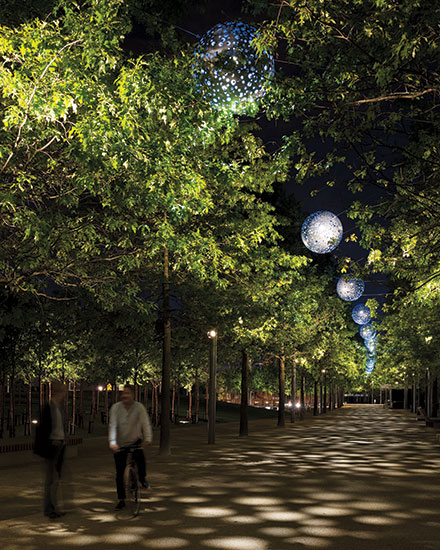On Thursday, April 16, the International Dark-Sky Association (IDA) and Illuminating Engineering Society (IES) announced plans to address the global issue of light pollution—an increasingly urgent phenomena that negatively affects the environment and human condition, especially in dense, urban areas.
As a first step, the Boards of Directors of both organizations unanimously adopted Five Principles for Responsible Outdoor Lighting in an effort to guide the industry—in the United States and around the world—toward the development of more socially- and environmentally-responsible solutions. “The principles are based on simple ideas,” says Brian Liebel, director of standards and research for the IES. They include:
- All light should have a clear purpose: Before installing or replacing a light, determine if it is needed and consider how it will impact the area, taking into account wildlife, nature and sustainability. In some instances, reflective paint or self-luminous markers for signs, curbs, and steps might reduce the need for permanently installed illumination.
- Light should be directed only where needed: Use shielding and careful aiming to direct a light beam so that it points downward and does not spill.
- Light should be no brighter than necessary: Use the lowest light level required and be mindful of surface conditions as some surfaces reflect light into the night sky.
- Light should be used only when useful: Use controls to ensure that light is available when needed, dimmed or turned off when possible.
- Use warmer color temperatures: Limit the amount of shorter wavelength (blue-violet) light, which some consider to be harmful.

Following these directives should not be difficult, Liebel adds, and the resulting lighting installations will be more effective and comfortable. According to a statement issued by the organizations, in recent years, light pollution has increased globally by two percent per year. The indiscriminate use of electric lighting at night leads to at least $3 billion in wasted energy in the U.S. alone. This wasted light can harm wildlife, imperil important astronomical research, and can obscure our view of the star-filled sky, as reported by RECORD in August 2016. “By following these simple principles, electric lighting at night can be beautiful, healthy, and functional. These principles work together to reduce light pollution, save energy and money, and minimize wildlife disruption,” said Ruskin Hartley, Executive Director of IDA.
Hartley told RECORD in an email that the IDA and IES have many common members and this action was largely a response to their concerns. He and Liebel began forming this collaboration last November with the express goal of working together to advance scientific, evidence-based information for use by individuals and municipalities responsible for outdoor lighting.
Future avenues for engagement between the two organizations include convening experts to advance a new metric to characterize the color quality of outdoor electrical lighting, assessing and updating the Model Lighting Ordinance adopted by IDA and IES in 2011, and working to educate and inform municipalities and individuals about how these principles can be applied to save money and advance quality lighting that protects the night. “We hope that through these efforts, we can provide objective information that can ensure public health and wellbeing, while simultaneously protecting our night skies,” says Hartley.




Post a comment to this article
Report Abusive Comment